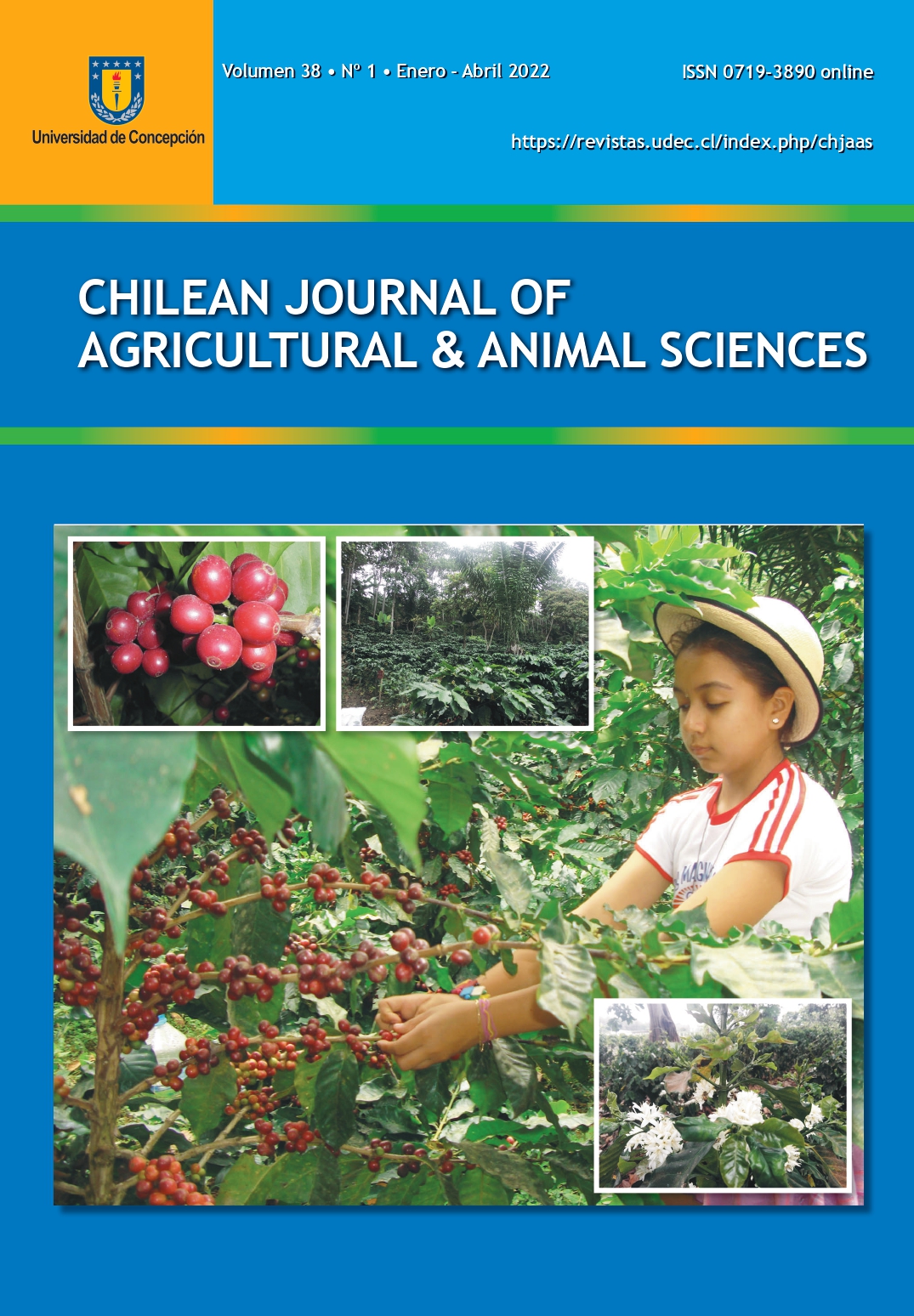TOTAL CARBOHYDRATE MOBILIZATION AND CRUDE PROTEIN CONTENT OF Adesmia bicolor (Poir.) DC. CROP UNDER PHOSPHORUS FERTILIZATION
DOI:
https://doi.org/10.29393/CHJAAS38-7MCJS80007Keywords:
native legume, forage species, biomass productionAbstract
In the arid-semi-arid central region of Argentina, biomass availability from natural grasslands in the period of low temperatures is scarce, which is why to achieve a higher production of winter-growing forage species is important. Among these species is Adesmia bicolor (Poir.) DC., a perennial herbaceous legume, with an indefinite cycle and clonal growth, characteristic that favors its persistence under intensive grazing, and a high capacity to fix Nitrogen (N). Due to the scarce information regarding the behavior of this crop under fertilization, the objective of this work is to evaluate the biomass production, biological Nitrogen fixation (BNF), and total carbohydrate mobilization of A. bicolor under phosphorus fertilization. The experiment was carried out in a plot with an already established A. bicolor crop. The experiment design was randomized complete blocks with three repetitions. The treatments applied were three doses of liquid phosphate fertilizer: Treatment I: 0 kg ha-1 (control); Treatment II: 50 kg ha-1, and Treatment III: 100 kg ha-1. Six samples were collected every 60 days and aboveground/ belowground biomass, crude protein and total carbohydrate content were determined. The results showed that Treatment II (50 kg ha-1) produced the greatest biomass of all the treatments, whereas the different fertilizer doses did not affected crude protein content in aboveground and belowground biomass and carbohydrate mobilization pattern.
Downloads
Published
How to Cite
Issue
Section
Copyright (c) 2022 Universidad de Concepción

This work is licensed under a Creative Commons Attribution 4.0 International License.







